Author’s Note: Much of this information is courtesy of Charlie Judkins, and is part of his research for EAST COAST INKWELLS , an upcoming book co-authored by Thad Komorowski, which details New York animation from the teens to the 1960s.

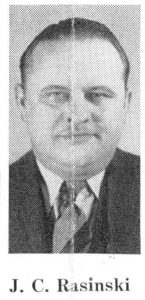 Born in 1907 as Constantine Rasinski, he later changed his name to John Conrad Rasinski sometime after 1928. His father was a Polish violinist who toured Europe before coming to the United States. He grew up in Waterbury, Connecticut, and commuted to New York City from his home state by 1925, studying with illustrator Norman Rockwell, who convinced Rasinski to pursue cartooning. He sold his first cartoon—as he claimed—on May 20th, 1927, the day of Charles Lindbergh’s non-stop flight from New York to Paris.
Born in 1907 as Constantine Rasinski, he later changed his name to John Conrad Rasinski sometime after 1928. His father was a Polish violinist who toured Europe before coming to the United States. He grew up in Waterbury, Connecticut, and commuted to New York City from his home state by 1925, studying with illustrator Norman Rockwell, who convinced Rasinski to pursue cartooning. He sold his first cartoon—as he claimed—on May 20th, 1927, the day of Charles Lindbergh’s non-stop flight from New York to Paris.
From around 1927 through 1929, he drew cartoons for an unknown paper in Waterbury, the Bell Publishing Company and various humor magazines. In 1929, he joined Paul Terry’s studio in the Bronx as an inker. He evolved into an assistant animator/in-betweener under head animator Frank Moser, and animated his own sequences by 1931. By 1934-35, Rasinski’s drawing/animation style, influenced by former animator Bill Tytla, reached maturity and becomes identifiable in the Terry films. One such example is his climactic scenes with a villainous spider in the holiday-themed Ye Olde Toy Shoppe (released December 1935), towards the end of the film.
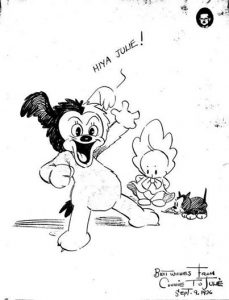 In the summer and fall of 1937, Terry lost many animators as they flocked to the West Coast to work at MGM. To combat the dilemma, Rasinski, along with John Foster and Eddie Donnelly were promoted as directors. The Saw Mill Mystery, released October 1937, and one of many melodrama spoofs featuring Oil Can Harry, was his directorial debut. In many of the cartoons he directed, Rasinski also served as an animator. He became the dominant creative influence for rising artists at the studio; John Gentilella and Marty Taras were taught how to animate by Rasinski, and considered themselves his protégés.
In the summer and fall of 1937, Terry lost many animators as they flocked to the West Coast to work at MGM. To combat the dilemma, Rasinski, along with John Foster and Eddie Donnelly were promoted as directors. The Saw Mill Mystery, released October 1937, and one of many melodrama spoofs featuring Oil Can Harry, was his directorial debut. In many of the cartoons he directed, Rasinski also served as an animator. He became the dominant creative influence for rising artists at the studio; John Gentilella and Marty Taras were taught how to animate by Rasinski, and considered themselves his protégés.
After been fired from Disney in 1943, Tytla returned to Terry’s studio at New Rochelle. During this period, the Terrytoons “house style” cemented, with characters drawn with small pupils and bags under their eyes—a trait Rasinski adopted. According to a short autobiography supplied by Rasinski from the National Cartoonist Society, he worked on animated films for the Army and the Marines during World War II. His first wife Marie died in 1945, though he later married a woman named Alma.
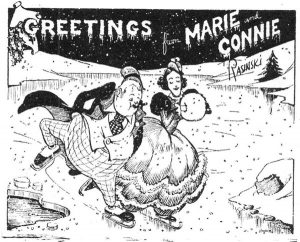 In the mid-‘40s, while still employed at Terrytoons, Rasinski drew comic book stories for Jason Comic Art (JCA), Magazine Enterprises (Cowboys n’ Injuns) and Alfred Harvey (Nutty Comics and Clown Comics). They look very much like Paul Terry’s films, a style Rasinski borrowed from Tytla, and many of the studio’s key animators inherited. Helpless Hank, one of the characters he drew for Harvey, is an exact duplicate of Dimwit, the idiotic hound always tricked by the screwball magpies Heckle and Jeckle.
In the mid-‘40s, while still employed at Terrytoons, Rasinski drew comic book stories for Jason Comic Art (JCA), Magazine Enterprises (Cowboys n’ Injuns) and Alfred Harvey (Nutty Comics and Clown Comics). They look very much like Paul Terry’s films, a style Rasinski borrowed from Tytla, and many of the studio’s key animators inherited. Helpless Hank, one of the characters he drew for Harvey, is an exact duplicate of Dimwit, the idiotic hound always tricked by the screwball magpies Heckle and Jeckle.
By 1947, like many of the other artists at the studio, Rasinski drew comic book stories with the Terrytoons star characters for St. John Publishing, including Mighty Mouse, Heckle and Jeckle, Gandy Goose and Sourpuss, Dinky Duck and the Terry Bears. He continued drawing the Terry-oriented comics as the studio was sold to CBS in the mid-‘50s, while he still served at as an animator and director for the theatrical cartoons.
He worked at Terrytoons up until several days before his death in 1965. Doug Crane claimed to have carried him out of the studio on his last day because he was so sick and frail. Though Rasinski was never given the chance to be recognized for his work for Paul Terry, his fellow colleagues spoke about him with great admiration in later years.
Here is a sampling of Rasinski’s comic book work (both non-Terry and Terry stories), spanning from the mid-1940s to the early 1950s.
• “Pvt. Pinto”—Latest Comics #2 (undated, 1945)
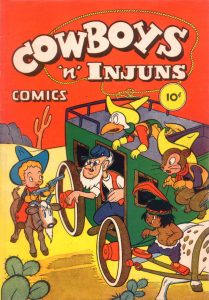
• “Ol’ Smokey”—Cowboys n’ Injuns #1 (undated, 1946)
• “Buck ‘n Wing”—Jamboree Comics #1 (undated, 1946)
• “Sheriff Pop Gunn”—Nutty Comics #4 (May-June 1946)
• “Helpful Hank”—Nutty Comics #5 (Fall 1946)
• “Mopy and Dick”—Clown Comics #3 (Winter 1946)
• “No Place Like Home” (Dinky Duck)—Terry-Toons Comics #67 (April 1948)
• “The Jailbirds” (Heckle and Jeckle)—Terry-Toons Comics #71 (December 1948) [An adaptation of Free Enterprise, directed by Mannie Davis, released a month before the comic magazine.]
• “The Bird School” (Mighty Mouse)—Mighty Mouse #15 (February 1950)
• “Safety First” (Terry Bears)—Terry Bears #1 (June 1952)
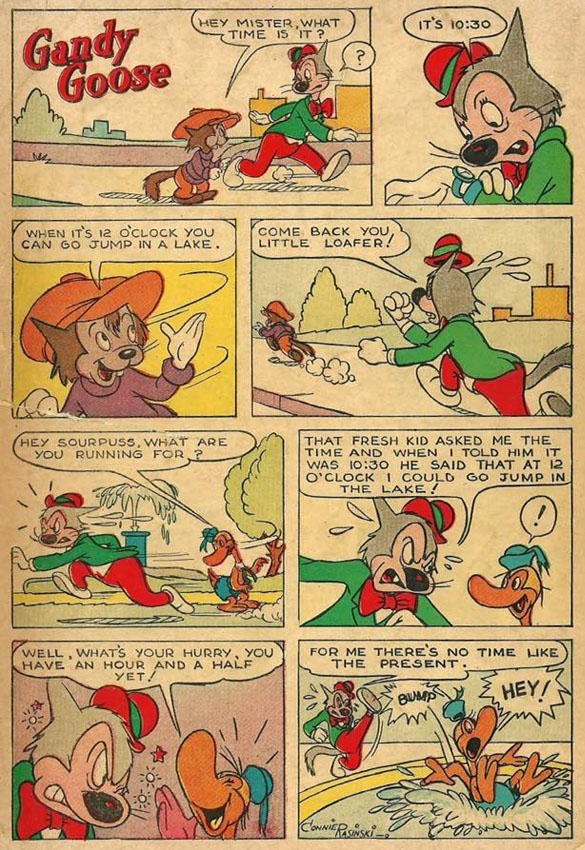
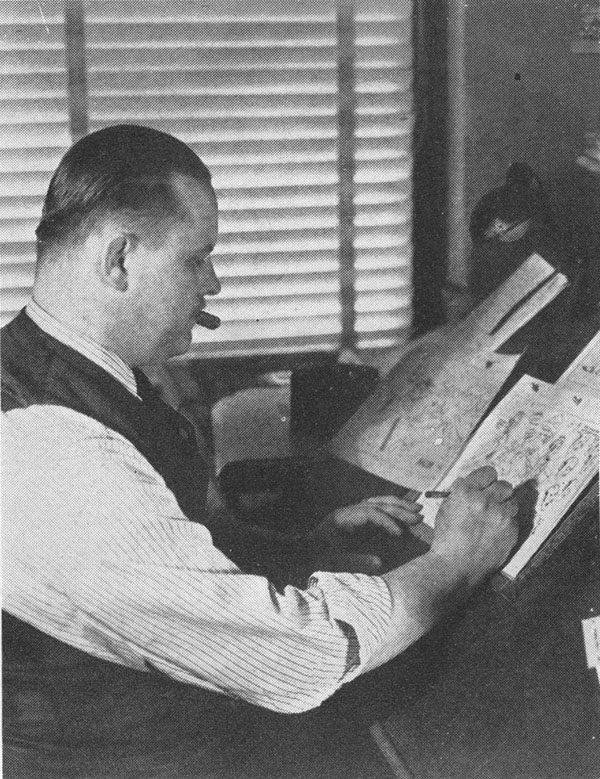
(Thanks to Charlie Judkins and Milton Knight for their help.)


 DEVON BAXTER is a film restoration artist, video editor, and animation researcher/writer currently residing in Pennsylvania. He also hosts a
DEVON BAXTER is a film restoration artist, video editor, and animation researcher/writer currently residing in Pennsylvania. He also hosts a 





















































































“Fired”? Didn’t Bill Tytla choose to quit Disney in ’43?
I’ll always remember the Terry drawings that Connie Rasinski may have been responsible for in the cartoons. I always felt that just about all the anthropomorphized animals in Terry cartoons looked far more human than four-legged animal. Just look again at that dog that Heckle and Jeckle mercilessly “heckled” in the various cartoons. Take the ears and nose and change them to human; the body guild was always human walking upright. The two “boids” were teh closest things to non-human that I recall the Terry Studio doing before TOM TERRIFIC, although Percy and Roquefort were definitely a cat and mouse. I’d love to read that book about East Coast animation in the golden age.